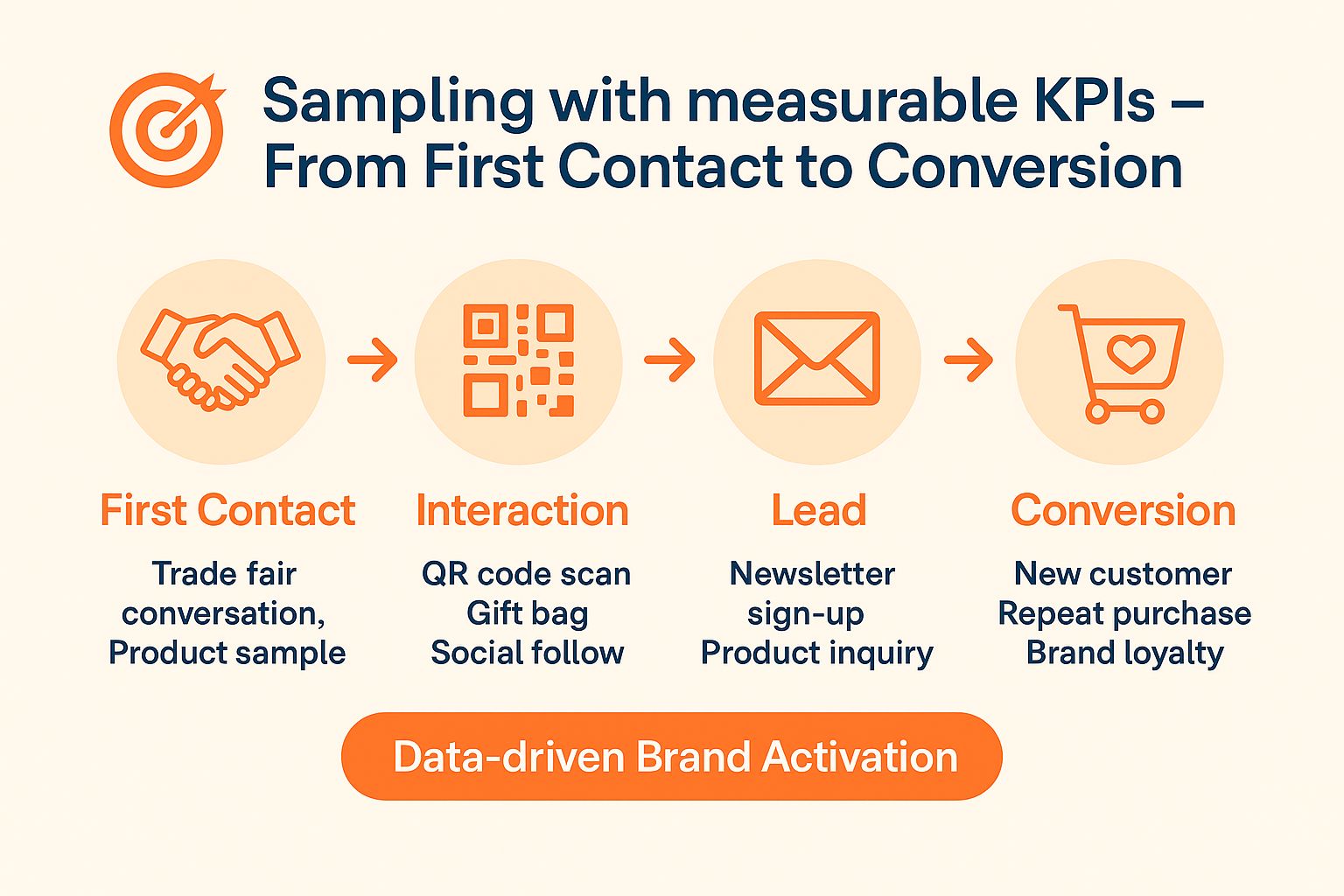
How do you measure the success of a sampling campaign? It’s a question many brands, especially in the B2B sector, are asking themselves.
At this year’s Anuga trade fair, our clients faced this very challenge. It wasn’t just about showing presence or presenting products. It was about turning encounters into measurable results.
From the start, it was clear: only those who define clear goals can prove real success in the end. That’s why, together with our clients, we identified the KPIs that truly matter not just how many samples were handed out or how many conversations took place, but which of these led to qualified leads, concrete enquiries and lasting business relationships.
During the trade fair, visitors weren’t simply surprised with a product; they were actively drawn into dialogue. A short conversation, a spontaneous tasting, a targeted question – each of these moments became part of a larger story. This created a campaign flow that extended from the physical contact at the booth to digital follow-up.
The data collected told a story far beyond numbers. It revealed which touchpoints had the greatest impact: when a simple “Can I try this?” turned into genuine buying interest; when a newsletter sign-up wasn’t just routine but a sign of real curiosity; and when a first encounter grew into a valuable business partnership.
This interplay between human interaction and analysis, between emotion and structure, made all the difference. Sampling thus became an instrument that goes far beyond the moment itself. It not only strengthens brand presence but also delivers solid insights for future campaigns, showing which messages resonate, which audiences are most receptive and how small adjustments can create big effects.
In the end, one thing became clear: sampling is no coincidence. It’s plannable, scalable and measurable – when done right. The combination of thoughtful strategy, empathetic interaction and well-defined KPIs turns a simple tasting into a precise building block of brand communication.
Because wherever people experience products, they don’t just taste flavour they experience trust.
And trust is the currency in which real conversions are made.